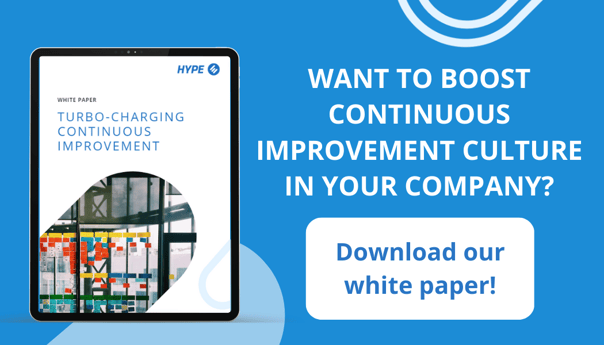Continuous improvement is a process that involves making incremental changes to systems, processes, and products to achieve better results over time. It’s a crucial aspect of business management, ensuring that organizations remain competitive, efficient, and profitable in a constantly evolving marketplace.
Here, we explore why the process of continuous improvement is the best way of generating a steady stream of innovation. Anyone might get lucky once; what’s needed is a way of “repeating the trick”. Managing the process isn’t a case of one size fits all, but a series of parallel journeys with different starting points leading to the same destination.
While we can make improvements in a random fashion, stumbling our way toward better ways of doing something, it makes sense to try to organize the process in a systematic fashion — capturing what someone learns and sharing it, rather than reinventing the same wheel. It’s all about finding ways to maintain progress, continuously searching for further improvements, and encouraging participation from everyone in the process.
Step-by-step CI process
Step 1: Define the process
The first step in continuous improvement is to define the process that needs improvement. This can be a product, service, or any system or process within an organization. The problem must be clearly defined and understood by all the stakeholders. Whatever needs improving must be meaningful enough that your audience can relate to it and want to contribute to finding a solution. In other words, you need to find a process that when improved, provides meaningful, ideally measurable, value.
When defining a process, never rush into thinking about the possible solutions or the causes of the issues in the process. In this first step, you need to be as open as possible and encourage everyone to contribute, rather than prompting anyone into possible solutions.
We recommend describing the process as a story and positioning it as an opportunity to achieve better results to inspire your audience to generate ideas. People love stories. And it’s easier to spark ideas when thinking about the positive outcome rather than when thinking about the negative effect it has now. The story should allow participants to understand the magnitude of the issue and the impact fresh ideas would have on reaching your organization’s goals.
Questions that are relevant to ask when defining the process include:
- What’s the objective?
- Who’s available to help?
- Is the issue critical to improving quality?
- What’s the project scope and timeline?
Step 2: Measure the process
The next step is to measure the process, which involves gathering data about the process’s current performance.
First, you need to define which aspects of the process you want to measure. This can include things like:
- Time: How long does the process take from start to finish?
- Quality: How well does the process meet your desired outcome or standard?
- Cost: What is the cost of resources required to complete the process?
- Efficiency: How effectively does the process use resources to achieve the outcome?
- Productivity: How much output is generated per unit of input?
Once you’ve identified what you want to measure, you can select the appropriate metrics to track these aspects of the process. For example, if you want to measure time, you can track the duration of each step in the process or the overall time from start to finish. If you want to measure quality, you can use a checklist to evaluate whether each step in the process has been completed to the desired standard.
To ensure that the measurements are accurate and reliable, it's important to establish a clear methodology for collecting and analyzing the data. This can involve creating standardized procedures for data collection, using tools such as process mapping to visualize the process, and establishing a system for regular monitoring and review.
By measuring the process in this way, you can identify areas where improvements can be made and track progress over time. This can help you to optimize the process and achieve better results in terms of time, quality, cost, efficiency, and productivity.

Step 3: Analyze the data
The data collected in step 2 should then be analyzed to identify the root cause of any problems or inefficiencies in the process. You might identify more than one issue with the process or more than one possible root cause. So in this step, you should prioritize these root causes and identify which have the biggest negative impact on your defined measures and desirable output.
During this analysis step, creating a process map can be helpful. A process map visually represents your process, showing the steps involved, the sequence of these steps, and the inputs and outputs of each step. This can help you better visualize each step in the process, and identify gaps, redundancies, decision points, and who is responsible for what. It can also help you to understand how each step contributes to the overall process.
Step 4: Develop solutions
Based on the results of your analysis, you can now start to crowdsource potential solutions. Involving everyone who is part of the process is usually the best practice in large organizations. Specifying to everyone involved that these potential solutions should address the root cause of the problem and should be feasible and realistic should produce strategically aligned ideas and a pool of creative and innovative solutions in areas such as process redesign, equipment upgrades, and training that can be evaluated and implemented over time.
The next step is to prioritize these solutions. One way of prioritizing is to focus on implementing the simplest and easiest solutions first – the "quick wins". These smaller changes often have the quickest impact and everyone will be able to observe their positive results. Time can then be set aside to implement the bigger changes that might take longer to action and have a lag when it comes to producing results.
Perhaps aside from the "quick wins", each solution should be tested first to identify any potential risks, and detailed implementation plans should be drawn up.
Step 5: Implement the solution
Once a solution has been selected, it’s time to communicate the changes and improvements to all stakeholders and move forward with implementation. It’s important to monitor implementation closely to ensure that it’s successful.
This step of the process can be handed over to a dedicated project management team once the necessary resources have been approved and allocated. As with step number 4 (Develop solutions), this all depends on the scale of the new changes and improvements and whether you’re making a quick fix or large-scale changes to the process.
Step 6: Monitor and measure the results
After implementation, the improved process needs to be monitored and measured to ensure that the outcome has been successful and is delivering the expected results. The same data collected in step 2 (Measure the process) can be used to measure improvements. This step is crucial as it provides feedback on the effectiveness of the solution and whether further improvements are needed.
It's vital to keep everything documented and update the data and all the changes regularly. Keep a close eye on these numbers as you need to evaluate whether the improvements are working as expected.

Step 7: Standardize the process
Once the solution has proved successful, the process should be standardized. This involves documenting the changes made to the process and ensuring that they are communicated to all stakeholders. This step ensures that the improvements are sustainable and can be replicated consistently.
Step 8: Repeat the process
The final step is to repeat the process. Continuous improvement is an ongoing process, and it’s important to continually assess processes in order to identify areas for improvement. By continuously improving processes, organizations can remain competitive and achieve better results over time.
So it’s clear that continuous improvement is a crucial aspect of business management, enabling organizations to remain competitive and achieve better results over time. The step-by-step process we’ve outlined here provides a framework for systematically identifying and addressing inefficiencies in processes to enable organizations, big and small, to achieve sustained success and growth. Of course, this framework can and should be adapted to your unique business needs.
To find out more about how HYPE Innovation is helping organizations facilitate their continuous improvement process, please contact our team, or read our case studies here.









